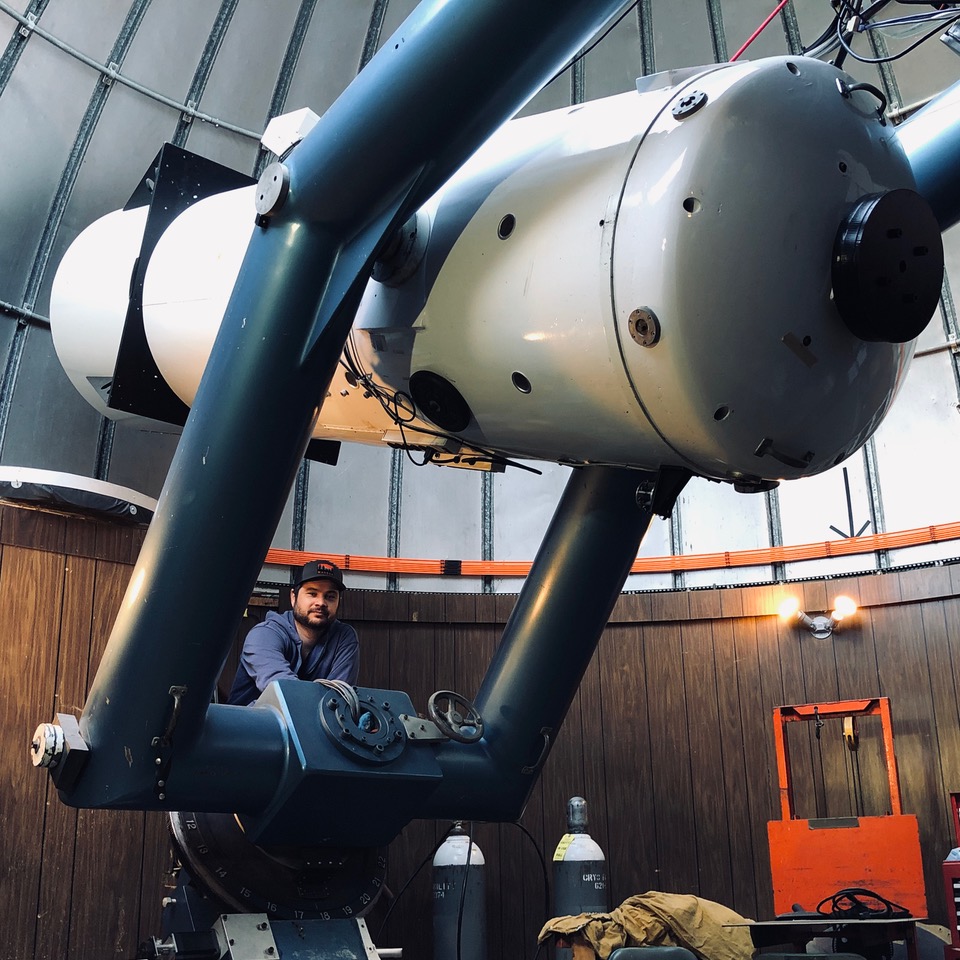The man who guards our peaceful sleep from the Santa Catalina Mountains in Arizona
Nothing compares to the smell of a telescope in the evening at sunset. Especially when you know that a clear night awaits you.
Kacper Wierzchoś
A bright comet enchanted him when he was 9. A few years later, he captured the transit of a planet in front of the solar disk and that image brought him public attention. His observation project opened him doors to the most advanced telescopes of the world. The passionate amateur astronomer became a professional. His romantic dream of being alone in an observatory at the top of a mountain and searching for asteroids and comets became a reality. Polish astronomer, Kacper Wierzchoś.
What was your first encounter with astronomy?
I remember my first encounter with astronomy very vividly. My parents and I were in a car driving on some country road. At some point my dad stopped the car, we stepped outside and he showed me an elongated fuzzy light that had a short tail near the horizon. I was 9 years old at the time and the comet was C/1995 O1 (Hale-Bopp). That sparked my interest in astronomy in general and comets in particular.
What was your main source of information about astronomy in the beginning?
It was a mixture between books and later on the internet. I had a several books about astronomy that my parents bought for me, but we also had internet at our house in the early 2000s. Most of the information about astronomy on the internet was in English so that must have helped me learn English.
Nowadays do you prefer internet or printed books?
Well I don’t think that anybody could say that the internet is not the main source of information for pretty much anything. I still consult my astronomy books on a regular basis for things like biographies of astronomers that I admire, reference information on comets, star atlases, observing guides, etc.
Can you name your favourite astronomy book?
I’m not sure I can choose one favourite book, but at the top of the list are Gary Kronk’s, Maik Meyer’s, and David Seargent’s seminal Cometography series, Robert Burnham’s „Celestial Handbook”, and William Liller’s „The Cambridge Guide to Astronomical Discovery”. The two last titles are dated but I still find myself opening them quite often.
You were born in Lublin, Poland, but lived from age 3 in Lleida, Spain. You have been living in USA for the last 5 years. Was it easy to switch to English when you moved to America? How many languages do you speak?
Yes, I was born in Lublin, Poland in 1988 but I lived in Spain between 1991 and 2015, that is most of my life. In my opinion learning English was not that difficult as we learned it at school at an early age. I’m still working on improving my English (specifically my grammar) but my wife is American so that definitively helps. I speak four languages: Polish, Spanish, English and Catalan.
Are you in touch with Polish astronomers?
Yes, I’m in contact with several Polish amateur astronomers on different platforms. Some of them were kind enough to invite me to give a couple talks about my work to a wide range of audiences. They also got me interviews in Polish science communication programs or in the Polish news and TV.
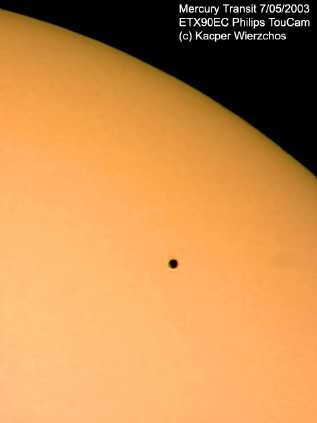
You decided to become a professional astronomer as a teenager. Several events led to this goal, which more and more strengthened your decision. Let's start with the year 2003. Mercury transit brought you recognition. Do you remember how it was and what followed next?
Yes, I remember the Mercury transit of 2003. I was 15 at the time and took photographs of it with my Meade ETX-90 telescope and a Philips TouCam webcam. CCD cameras and any dedicated astronomy cameras were too expensive at the time, and I remember that it was popular to electronically modify that specific model of webcam to be able to use it for astronomy. My father and I modified two of those cameras. We broke the first one, but the second one ended up working well.
Tell us more about your photo of the Mercury transit.
My image of the Mercury transit was elected as image of the month by the Astronmía y Universo magazine. It is the main astronomy magazine in Spain (now only called Astronomía) and it was a nice feeling, as the image was published in their print edition. By then I was interested in astrophotography, but my interest changed towards astrometry of minor planets and comet hunting in the following years.
The Mercury transit was perfect preparation for a similar event next year, for the transit of Venus, which occurred on 8th June 2004...
Yes, I totally agree and it was what really started my career in astronomy (although not yet professionally). At that time I was a high-school student, and since I already had that equipment, my Physics teacher Anicet Cosialls, two high-school friends and myself decided to embark on a project of measuring the orbital period of Venus and attempted an observation of its atmosphere using data collected by us during the transit. We decided to submit the project to an international contest called „Catch a Star” organized by the European Southern Observatory. We ended up winning the contest and the price consisted of a trip to Cerro Paranal in Chile. Can you imagine? Three 16 year boys and their high-school teacher roaming free on one of the most advanced telescope facilities in the world in the middle of the Atacama desert?
But this wasn´t end of the story, was it?
Correct. We submitted the project to a Spanish contest called „Física + matemáticas en acción” (Physics and mathematics in action) and also won. This time the prize was a trip to the Teide observatory in the Spanish Island of Tenerife.
For me, the most important price of those contests was not the trip itself, but meeting Richard West, who was giving a talk at the „Física + Matemáticas en acción” competition that was held in Granada, Spain, in September of 2004. Richard West is the discoverer of the Great Comet C/1975 V1 (West), and by that time I was already hooked on comets. For me, as a teenager, he made a lasting impression.
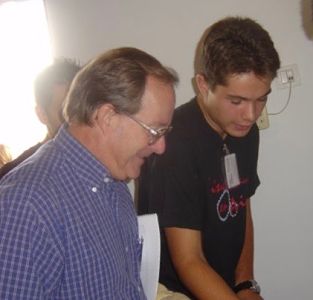
Photo: K. Wierzchoś archive
I then decided that one day I would also discover a comet. It was clear to me that I had to become a professional astronomer. I was an amateur astronomer (still am) but I knew that I had it in me what was needed to become professional. Searching and studying the night sky and getting paid to do it sounded like a dream. I was also very attracted to the romantic idea of being alone at night in an observatory at the top of a mountain making discoveries.
You said your interest moved towards astrometry. It was the summer of 2008...
As my interest in astronomy deepened, with the help of my uncle I acquired an 8” SCT that I placed on my parent’s balcony in Madrid, Spain. I called it the Aravaca Observatory and I obtained the MPC code J20. At that time I learned a lot from Spanish expert amateur astrometrists like Ramon Naves or Gustavo Muler. I remember that we used to observe while we had a Skype call going on. From that location, I started doing astrometry of minor planets (mostly comets), but it was a project that soon came to a halt due to the terrible light pollution of a large city like Madrid. I did, however, obtain astrometry of the impactor 2008 TC3 found by Richard Kowalski of the Catalina Sky Survey.

After finishing high school you studied Physics Sciences at Complutense University of Madrid. Then you followed your studies in Florida, USA. Why there and what was your major?
I studied what was then called the „Licenciatura en Físicas” (equivalent to an American Bachelor of Science + a Master’s degree) at the Universidad Complutense de Madrid. When I finished my degree, I moved to the USA where I completed my doctorate at the University of South Florida in Tampa. My work was carried under the supervision of Dr. Maria Womack, and I studied the carbon monoxide emission of three comets with radio telescopes. At the beginning of my doctorate studies I was a Teaching Assistant and having to teach classes was a great learning experience. When I started my Ph.D. I did not have any experience with radio astronomy, and it was great to learn about it and specialize in this field. I think that being familiar with several techniques in astronomy could potentially open lots of doors.
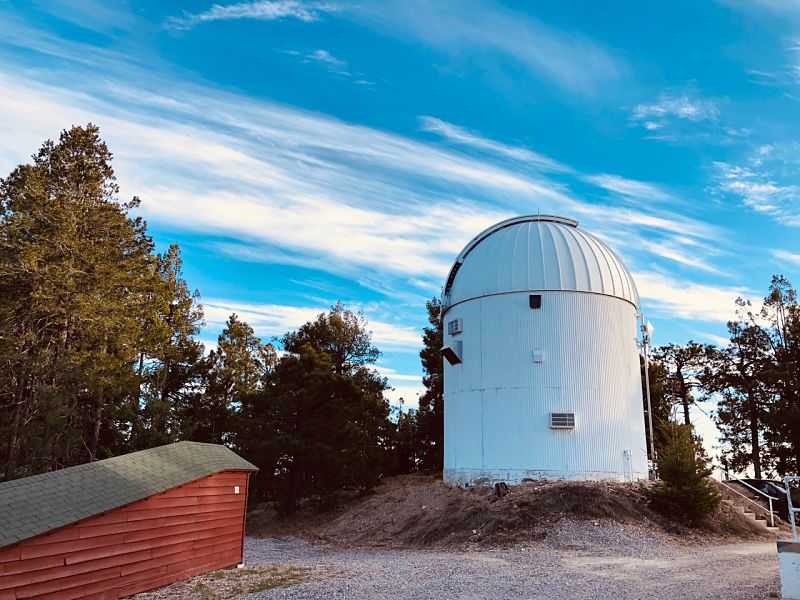
You joined the Catalina Sky Survey (CSS) team in November 2019. How did you get job there?
Ever since I lived in Spain I knew about CSS and I was very interested in working in a survey. I love working with telescopes, and the human involvement in the night-time survey operations of CSS was really appealing to me. In the Spring of 2019, I did an internship at CSS as a visitor, and during this time I developed a software that has been implemented in the nightly operations of CSS that detects outbursts or increases in magnitude of asteroids. When I finished my Ph.D in the fall of 2019 I applied for a job at CSS and by that time I already knew everybody in the team. Returning to CSS now as a full time observer has been great. Being familiar with the fine art of astrometry definitively helped me when I entered CSS. When I joined CSS in 2019, it was great to be trained by the person whose NEO I followed up in Spain while I was in college. In a way, it felt like closing a cycle.
How does your observation shift look like and what are your nightly tasks?
The shifts of a night-time observer usually vary between 3 and 6 nights in a row and we have several shifts per lunation. We work at night and sleep during the day at the dormitories of the observatory. During the night, at our survey telescopes (1.5m reflector on Mt. Lemmon, MPC G96 and 0.7m Schmidt on Mt. Bigelow, MPC 703) we are responsible for running the survey operations from the control room of the telescopes at the observatories. We operate the telescopes, decide where to survey, how to survey, report discoveries to the MPC, perform follow-up, etc. We have the capability of operating our follow-up telescope remotely (1m reflector on Mt. Lemmon, MPC I52). We can do this either from the control room of our survey telescopes, from our operations center at the University of Arizona campus or even from home.
In case your observing session runs whole night, there are hundreds of CCD images. How do you check them? Do you post them to MPC immediately?
Correct, we take between 800 and 1000 images each night at our survey telescopes. We check the images from the control room as soon as they are processed by our pipeline, which is a few minutes after they have been acquired. We send discoveries and astrometric measurements to the MPC immediately. As soon as we find a new object, we report it. We have a very robust pipeline that searches for moving objects or „detections” as we call them. Images of these detections are validated by eye. Every new NEO or comet that we submit has been visually inspected by the observer. The vast majority of objects are discovered with the aid of this software, but every now and then an observer discovers an object „visually” on the images.
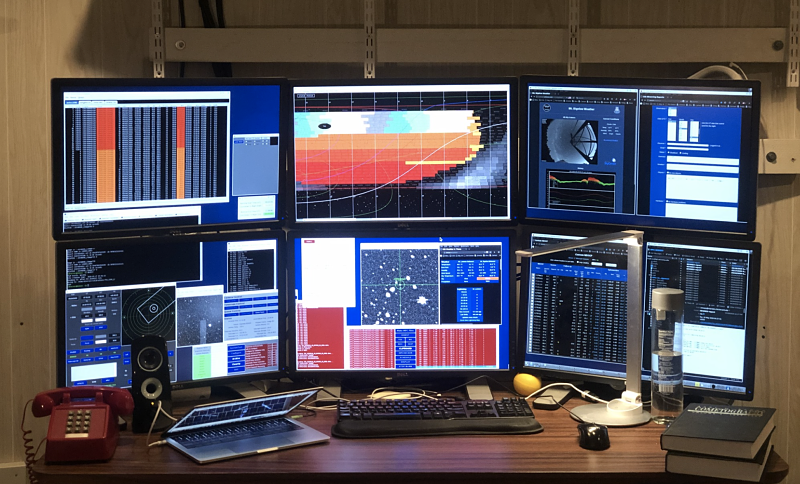
Your work brings new discoveries every day. Which was the first?
I have to confess that I don’t remember! As you say we find several NEOs each night, sometimes over 40 new objects in a night of survey close to opposition.
At the end of February, you discovered with your colleague Theodore Pruyne an unusual object, designated as 2020 CD3. The media wrote about it as „Mini-Moon“. How was it?
I joined CSS in Fall of 2019, and by February of 2020 I was already certified on our 0.7m Schmidt on Mt. Bigelow but I was still learning the ins and outs of our 1.5m reflector on Mt. Lemmon. We work alone at the telescope, but that night I was observing with Teddy Pruyne and getting training on our 1.5m reflector. During the night, we stumbled upon an object that looked just like any of the Near-Earth objects that we discover on a nightly basis. We submitted the discovery observations to the MPC and kept surveying. The next day Bill Gray from Project Pluto sent an email saying that this object might be on a geocentric orbit. Subsequent follow-up observations confirmed that this object was indeed captured by Earth’s gravity. At this point, we did not know whether the object was natural or man-made. As more follow-up observations came in, the area-to-mass ratio of the object confirmed that it was a natural object. Interestingly enough, besides our moon, this is the second natural object that has been found to be in Earth’s orbit at the time of the discovery. The first one was asteroid 2006 RH120, which was also discovered at CSS by our director Eric Christensen in 2006.
You came to the limelight again, was it different from the successes of 2003 - 2004?
Yes, this was kind of a funny story. When the object was announced by the MPC I put it on my Twitter. By then I had a handful of followers on Twitter which were mostly friends from Spain and family members plus a few astronomers wanted to share the news about this object with them, so I sent the tweet and went to sleep. When I woke up, I saw that the tweet had gotten thousands of retweets, I had emails and phone calls from The New York Times, The Washington Post, The Atlantic, CNN, and more media outlets then I can remember. What followed were some overwhelming days of being in the spotlight. Yes, it was very different from 2003/2004, this was a different ballgame.
Two months have passed and MPC announced the discovery of comet C/2020 H3 (Wierzchoś). Were you surprised when it happened?
It was a night like any other night of survey with the 1.5m telescope on Mt. Lemmon. Our mission is the discovery of Near-Earth asteroids, but every now and then a fuzzy and tailed intruder appears in our images. The weather on the night of the discovery, April 25th, 2020, was perfect, with not a single cloud in the sky. Around 3 am I surveyed an area close to the Milky Way in the constellation of Aquila. After the images started coming in from the camera, at around 4 am I spotted an 18.5 magnitude comet with a broad and diffuse tail pointing SW. We stumble upon numerous known comets each night, so I learned not to get too excited. When I checked that no known comet or asteroid was at the position of this comet, I got nervous. This was a big deal for me. I do remember having trouble typing the report to the MPC describing the cometary appearance of the object because my fingers were a bit shaky. That same night my colleague Carson Fuls was operating our 1m follow-up telescope, he observed the object after I sent the discovery observations and gave me a call to tell me that he also saw a tail and a coma. I did not want to get too excited because I knew that the object could be a recovery of a known periodic comet, but after only three days, on April 28th 2020 the MPC announced the comet and it was a very happy moment in my life. It was a faint comet, probably a garden variety comet, but it is hard to explain the joy of being the first human to lay eyes on that distant icy world.
So, the list of comets named after a Polish astronomer was updated with a 10th comet. You were obsessed by comets and you decided to hunt for them as an amateur after you were inspired by comet hunter Don Machholz and other comet hunters. When was it and what telescope did you use?
Yes, the Shoemakers, Rob McNaught, Clyde Tombaugh, Robert Burnham Jr., Don Machholz, Bill Bradfield, Antoni Wilk, Leslie Peltier, Tsutomu Seki, Shigeki Murakami, Minoru Honda and many other comet discoverers are people whose work I admire. I started visually searching for comets some 11 years ago when I lived in Spain with an 8” reflector. I have visually hunted on and off since then, time permitting. Recently I have been favoring my 125mm f/7.8 refractor and my 130mm f/6.2 reflector. In the past I used lager dobsonians. Nowadays, when I’m not working, I still scan the sky at low solar elongations and I really enjoy doing it. A visual discovery of a comet would be amazing despite being unlikely. I think that it caught us all by surprise when Don Machholz visually discovered comet C/2018 V1 (Machholz-Fujikawa-Iwamoto) low in the morning sky two years ago.
Why are some comets named as CATALINA and some after CSS astronomers e.g. C/2020 H3 (Wierzchoś) or C/2016 Q4 (Kowalski)?
This is described in the IAU Comet-Naming Guidelines. More specifically under section 3.4(a)(2), which says that if a single observer did the work to find a comet, note its cometary activity, measure its position + magnitude, and report the discovery, then the comet can bear the name of the observer. Comets named Catalina or Lemmon are objects for which one or more of those requirements listed by the IAU were not met. Usually comets named Catalina or Lemmon are objects that we find during the night but for which we fail to notice cometary activity. In other words, objects that we report as asteroids during during the course of the night, but that later on are found to display cometary activity. This might be due to the fact that the cometary activity was too weak upon discovery to be noticed by the observer, or that conditions on the discovery night were not good enough to notice it, moonlight, etc.
After finishing your shift at Mt. Bigelow or Mt. Lemmon, do you continue with your own telescope? What do you observe usually?
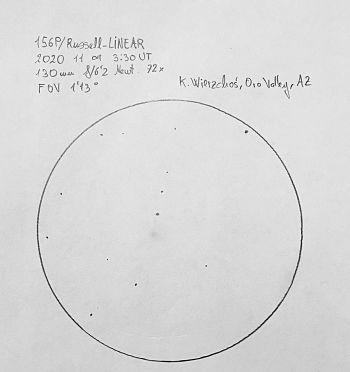
Well after I’m done with an observing night at work I usually go to sleep in the dormitory at the observatory. When I’m done with an observing shift I drive home down the mountain and by the time I get home it is already bright. I live approximately 2 hours away from the observatories. I have observed with some of my telescopes from Mt. Lemmon observatory after a night of work, that is when the sky is already brightening, and the big telescope on which I worked on is stowed and closed. When I bring the telescope to the observatory and I’m not too tired, I will scan the brightening morning sky, observe the Moon or any planet that might be in the sky.
You said you love the smell of telescopes. How many of them do you have? Which one is your favourite?
Nothing compares to the smell of a telescope in the evening at sunset. Especially when you know that a clear night awaits you. I took and modified that quote from the movie Apocalypse Now. I’ve had several telescopes over the years, and I too suffered from aperture fever. Recently I find myself being content with smaller aperture instruments that give me a wider field of view. I currently have a Takahashi MT-130 f/6.2 reflector, a Takahashi FC-76DCU f/7.5 refractor, a Stellarvue SVX-125D f/7.8 refractor and an Edmund Astroscan 4.05” f/4.2 reflector. I also have a 10” f/5 dobsonian that is now in pieces and needs some repair work on the spider vanes and the focuser. The Takahashi MT-130 is a very recent acquisition (I bought it last month) but it has quickly become one of my favorite telescope. The serial number tells me that it was made in 1990. The coatings on the mirrors are in great shape and the figure of the primary is just perfect. When I’m observing I place a lot of importance on the aesthetic aspect of the image at the eyepiece. Regarding this, I like this quote by Japanese comet hunter Tsutomu Seki:
„Good quality optics help attaining concentration of mind. Lenses and mirrors of poor quality will make it impossible to concentrate on observing. New comets at the time of discovery are very faint and diffuse. It is good quality optics, trained eyes, and a calm mind and experience that can pick up a slightly diffused objects with an unusual appearance out of countless faint stars”.
Do you have some more quotes, which you like?
I have a few favorite quotes:
„To hunt a speck of moving haze may seem a strange pursuit, but even though we fail the search is still rewarding for in no better way can we come face to face, night after night, with such a wealth of riches as old Croesus never dreamed off”.
Leslie Peltier
Leslie Peltier discovered several comets and wrote the classic book „Starlight nights”. That quote is from „Starlight nights” and it pretty much summarizes the ethos of comet hunting or searching the skies. It may sound cliché, but for me, visual comet hunting epitomizes the old idea of focusing on a journey and not a destination. It is thanks to visual comet hunting that I can locate hundreds of deep-sky objects with my telescope, and that I had breathtaking views of galaxies, star clusters, and nebulae that I did not know existed until they appeared at my eyepiece. Sweeping with a telescope, and coming face to face, night after night with these galaxies, clusters, and nebulae (and the occasional comet), more often than not reminds me of how insignificant we are in the universe. And that paradoxically gives me peace.
„Thou shalt dedicate thy whole being to the search project with infinite patience and perseverance.”
Clyde Thombaugh
This quote is the second of the "Ten Commandments for a Whould-Be Planet Hunter" written by Clyde Thombaugh (discoverer of Pluto and comet 274P/Tombaugh-Tenagra). Patience and perseverance are as important in astronomy as are in any other science, art, or craft.
„A few years later my father became seriously ill, and since I was young I began to worry about my own health. I cut back my searching of comets in order not to overwork myself. As a result, my observations became less frequent. I suffered in this pitiful condition for a while. I knew it was important to take care of myself, but I wondered if I really had to give up my dream (of finding a comet). A man can live at most for a hundred years, but this is certainly very short when compared with the life of stars. A short and dreamful life would be superior to a long monotonous one. So I chose to pursue my dream no matter what.”
Tetsuo Yanaka
This text by Japanese comet hunter Tetsuo Yanaka can be found in „The Cambridge Guide to Astronomical Discovery” by W. Liller. Being a full-time observer and a professional asteroid & comet hunter requires that I’m permanently on a night schedule. It is no secret that long-term night shift work has been found to be associated with an increased risk of heart problems, ulcers, certain types of cancers, and other health issues. I’m not going to lie; being on a full-time night schedule is not easy. But in my opinion, it is worth it. I think that it was also worth it for Yanaka, for he ended up achieving his dream and discovered two comets in the space of four days: C/1988 Y1 (Yanaka) and C/1989 A2 (Yanaka). If you want something, it is going to cost you something.
You are at the beginning of your professional career. What do you consider to be your greatest success to date?
I should answer this question on two levels. On a personal level, it has to be the discovery of comet C/2020 H3 (Wierzchoś). Comets are what got me into astronomy and in a way shaped my life. I live in a cometocentric universe. Most of my thoughts and actions revolve around comets.
On a scientific level, I’ll have to say that it was the co-discovery of 2020 CD3, also known as the minimoon. It’s been 9 months since the discovery of 2020 CD3 and three papers about 2020 CD3 have already been published. The discovery of 2020 CD3 drew a lot of interest and it was followed by a campaign of observation with some of the world’s largest telescopes like the Gemini North 8m or Keck 10m.
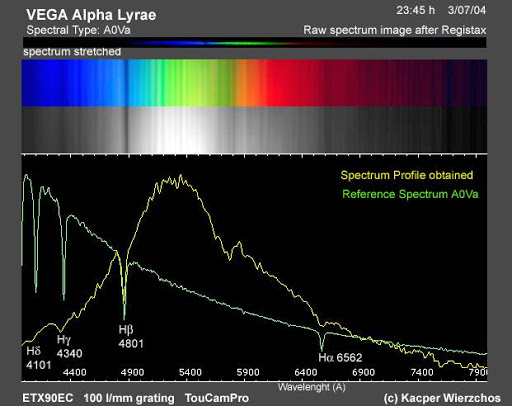
Your teenager dream of being alone at night in an observatory at the top of a mountain was fulfilled a year ago. You are living your dream, have your dream job and you are already a discoverer too. What would you advise to those who desire to achieve a similar goal?
It is hard to answer that question because I can only speak about my personal experience. I don’t have any general advice or something like „work hard” or „anything is possible”. But one thing that really helped me since I became interested in astronomy, and that literally opened lots of doors when knocking at the door of professors/supervisors in high school, college, and the job market, is that I always put in practice what I learned. For example, when I first learned about spectroscopy aged 15, I started taking spectra of stars with my 90mm telescope and a diffraction grating. When I learned about minor planets, I started doing astrometry and things like that. I consider myself a hands-on person, hence I like the observational part of astronomy. What I mean by this is that high school and college grades have only been part of the equation in my case. In fact, my grades were good, but not stellar. I think that if you prove that you can make a contribution to the science by yourself before you even study that science in an educational institution, that will open lots of doors.
You played in a rock group in your teenager years, you also play classical pieces on guitar. Is music your favourite kind of relax?
I did play in a rock band as a teenager while I lived in Lleida, Spain. We were called „Lust Epitaph” and played in a few local venues. But classical guitar is my main instrument. I would say that playing music, reading (mostly about comets and observational astronomy), archery, and birding are the main activities that I do to relax.
